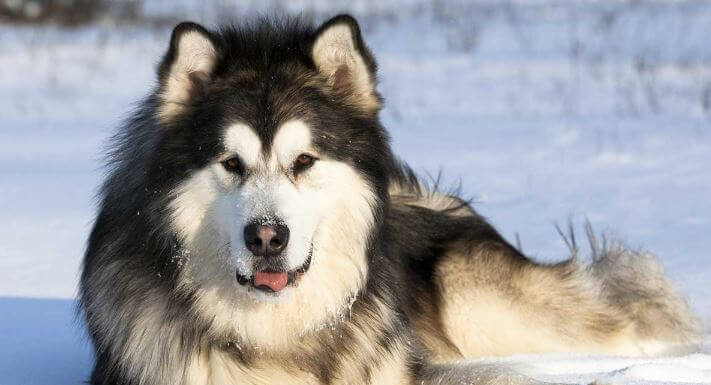The Alaskan Malamutes should be taken seriously because in many ways they are high-maintenance dog and wants a devoted owner who knows that.
Here are things you need to know before owning this breed.
Page Contents
The Siberian Huskies are not the same breed with the Alaskan Malamutes
Another big misconception about Alaskan Malamutes that many have is that they’re part of the Siberian Husky tribe.
Many people still name the breed the Alaskan Husky by misunderstanding.
It is an easy mistake to make. Both have a similar overall look, many have blue eyes, and both have thick coats with distinct designs. Also, you need to pay attention to their thick coats, they could breed fleas and ticks without you noticing anything.
This is why you need to call your local pest control to inspect your home, especially when you have a lawn; ticks lurk around tall grasses
Furthermore, they aren’t the same breed, though. They are not, in fact, part of the same family.
Alaskan Malamutes, as mentioned earlier, are a natural breed that has remained relatively unchanged with human interaction.
The size is one of the most notable differences between both dogs.
You will realize as you bring the two together, that an Alaskan malamute is far larger and stockier.
Under working conditions, the two breeds are often handled differently.
The Siberian Huskies can carry small loads very easily through frozen areas.
While the Malamutes can carry big loads. They’d been able to haul big freight because they dig the snow to move forward.

They have natural destructive behavior
During the day, these dogs require mental and physical stimulation. They have a normal working instinct.
If they have no way to get any of the pent-up tension out, they’re going to start ruining your things.
Destructive activity is not a small problem, despite their large size.
A malamute can rip holes in your walls, tear your couch and smash furniture quickly.
When they live outside, you can easily turn your yard into an excavated mess.
You need to offer these dogs lots of things to do to avoid destruction.
Share as much time as you can with them. They need your attention. If that’s not practical for you, then you need to find something to keep them occupied.
Your pet could just start hurling for your attention. Invest in some mental relaxation tools to spare yourself and your neighbors the hassle.
Investing in toys, chewable, and anything else that will keep them busy.
The characteristic of the Alaskan Malamutes
The Alaskan Malamutes are large dogs. Giant Alaskan Malamutes puppies are to become giant adults weighing between 60 and 100 pounds.
The thick fur coat is one of their distinguishing characteristics.
The Alaska Malamutes have two different coats. The outer layer is coarse, while the undercoat is soft and insulating. Under all the fur is a muscular body.
They are powerful and have been used throughout history to pull sleds.
They were bred for speed; they were then selected for their high endurance.
Their body was made to survive high temperatures and little food.
The meals they eat are slowly burned out so that they can carry on for miles.
Alaskan Malamutes health
The Alaska Malamutes are usually healthy, but they are like all breeds, vulnerable to other conditions of illness.
However, not all of the Malamutes will get any or any of these diseases, so if you are considering this breed, it is necessary to be aware of their health.
Many malamutes suffer from hip dysplasia, elbow dysplasia, hypothyroidism, or von Willebrand’s disease.
Here are some more details on possible conditions you might see in Malamutes:
Hypothyroidism:
This disorder is frequently misdiagnosed since tests are not specific and may be unreliable to determine the disease.
Hypothyroidism is the result of abnormally low thyroid hormone production.
Chondrodysplasia:
This is a genetic disorder that causes the puppies with deformities apparent in the abnormal shape and length of the limbs when they are born.
Hip Dysplasia:
The thighbone does not fit snugly into the hip joint in this inheritable condition.
Few dogs exhibit pain and lameness on one or both back legs, but with dogs with hip dysplasia, you do not see any symptoms of discomfort.
Cataracts: generally visible at 1 or 2 years of age, this is known as juvenile cataracts.
This form of cataract barely progresses towards blindness. These affected dogs should not be used for breeding.
Food
The diet should be formulated for a large-size breed with high energy and exercise.
For guidance on what to feed your Alaskan malamute and the proper portion sizes, you should contact your veterinarian or professional nutritionist.
They’ll change their dietary needs as they develop from puppyhood to maturity and senior status.
The Alaskan Malamutes with Children
The Alaskan Malamutes are gentle with kids and enjoy their company, but fast-growing, active Alaskan malamute puppies can quickly overpower a small child under the age of four.
They can trip a kid down with their exuberance.

